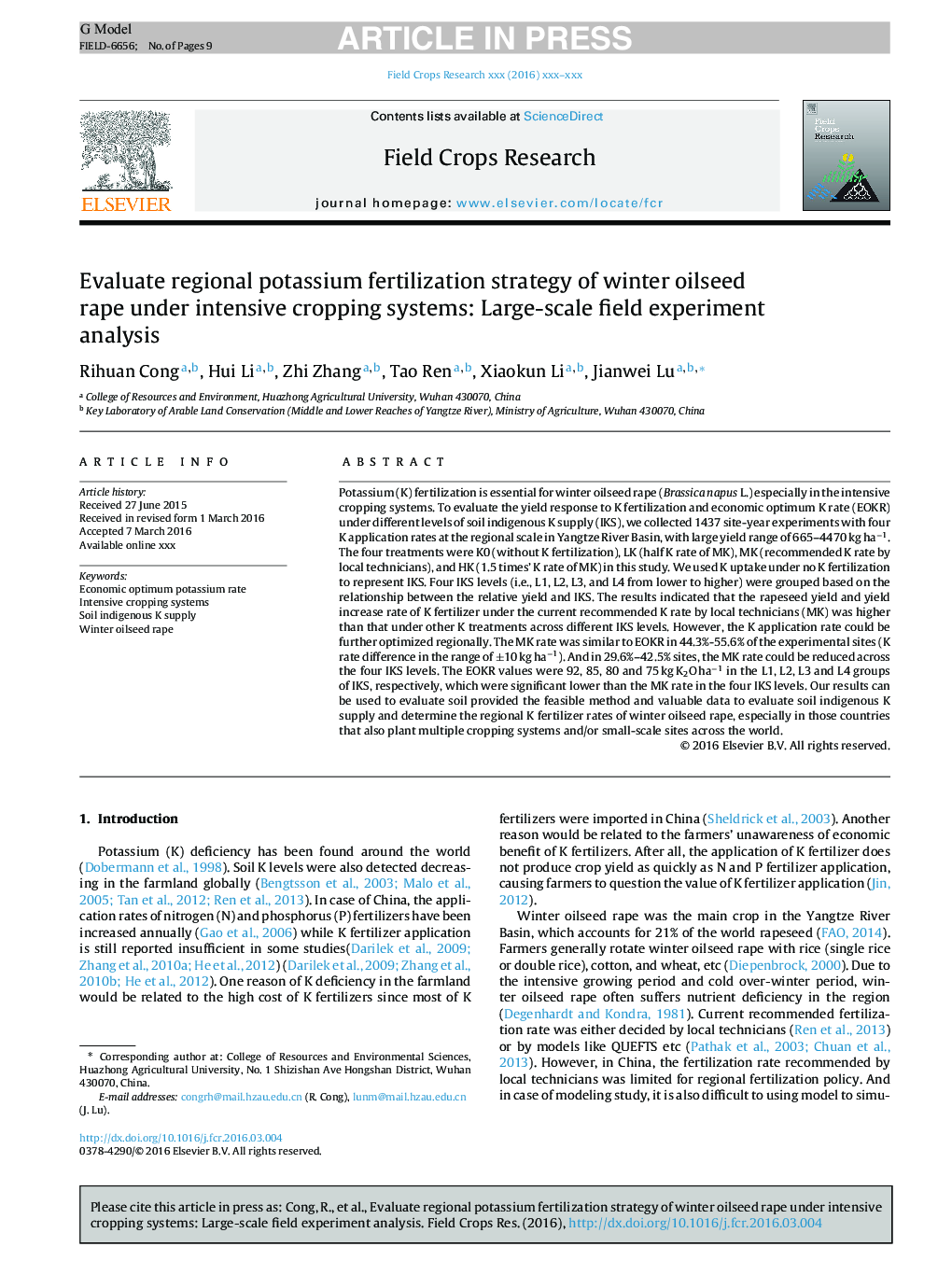| Article ID | Journal | Published Year | Pages | File Type |
|---|---|---|---|---|
| 6374445 | Field Crops Research | 2016 | 9 Pages |
Abstract
Potassium (K) fertilization is essential for winter oilseed rape (Brassica napus L.) especially in the intensive cropping systems. To evaluate the yield response to K fertilization and economic optimum K rate (EOKR) under different levels of soil indigenous K supply (IKS), we collected 1437 site-year experiments with four K application rates at the regional scale in Yangtze River Basin, with large yield range of 665-4470 kg haâ1. The four treatments were K0 (without K fertilization), LK (half K rate of MK), MK (recommendedâK rate by local technicians), and HK (1.5 times' K rate of MK) in this study. We used K uptake under no K fertilization to represent IKS. Four IKS levels (i.e., L1, L2, L3, and L4 from lower to higher) were grouped based on the relationship between the relative yield and IKS. The results indicated that the rapeseed yield and yield increase rate of K fertilizer under the current recommended K rate by local technicians (MK) was higher than that under other K treatments across different IKS levels. However, the K application rate could be further optimized regionally. The MK rate was similar to EOKR in 44.3%-55.6% of the experimental sites (K rate difference in the range of ±10 kg haâ1). And in 29.6%-42.5% sites, the MK rate could be reduced across the four IKS levels. The EOKR values were 92, 85, 80 and 75 kg K2O haâ1 in the L1, L2, L3 and L4 groups of IKS, respectively, which were significant lower than the MK rate in the four IKS levels. Our results can be used to evaluate soil provided the feasible method and valuable data to evaluate soil indigenous K supply and determine the regional K fertilizer rates of winter oilseed rape, especially in those countries that also plant multiple cropping systems and/or small-scale sites across the world.
Keywords
Related Topics
Life Sciences
Agricultural and Biological Sciences
Agronomy and Crop Science
Authors
Rihuan Cong, Hui Li, Zhi Zhang, Tao Ren, Xiaokun Li, Jianwei Lu,
